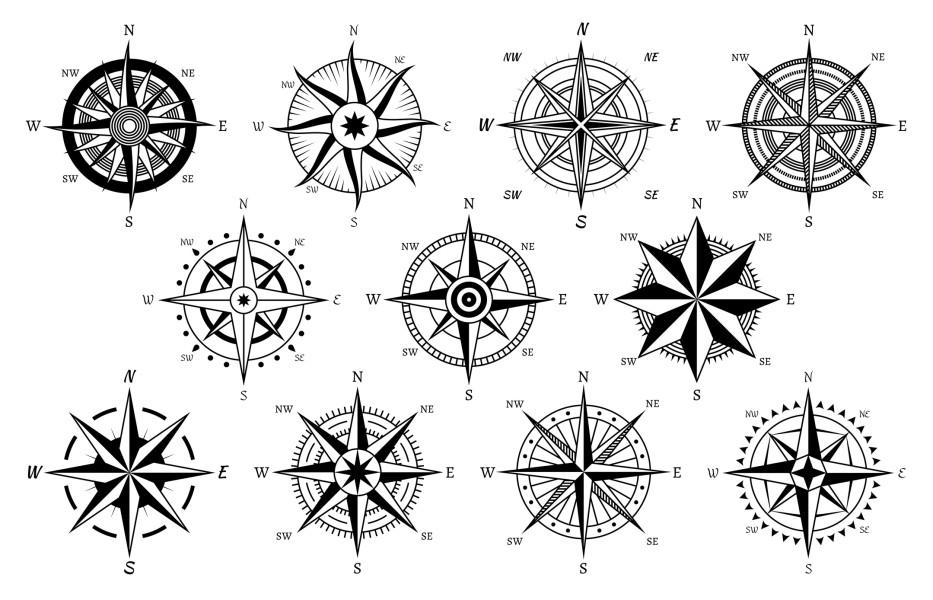“When regulators accept transfers of these congressional responsibilities, they not only drift outside their designated lanes, but they also remove the incentive for Congress to pursue legislative solutions,” wrote Jay Clayton and Gary Cohn in a New York Times opinion piece titled The Microsoft-Activision Mess Is a Blow to American Sovereignty [read here]. “Why go through the messy legislative process when you can get what you want directly from the regulators?” they continued. “This, unfortunately, leads to legislative inaction in Congress and can be viewed as another form of constitutionally challenged outsourcing.”
Overall: “The Policy on Counterparties for Market Operations has been updated to clarify that, in addition to implementing monetary policy, broader policy goals including fostering financial stability and ensuring bank safety and soundness, are considered when reviewing a prospective or existing counterparty,” wrote the NY Fed on their website. And of course, on the surface, that’s the most boring quote I’ve ever opened with. Truly. But how about this? “SEC registered 2a-7 funds that, in the sole judgement of the New York Fed, are organized for a single beneficial owner, or exhibit sufficient similarities to a fund so organized, generally will be deemed ineligible to access reverse repo operations.” More boring. For sure. They concluded with this beauty: “These updates are intended to clarify the New York Fed’s existing counterparty management practices and do not impact the participation of current reverse repo counterparties.” My favorite word here is “clarify,” which suggests their policy was misunderstood. In fact, it was perfectly understood. So understood that the Fed needed to clarify to investors that accelerating the banking crisis is in nobody’s interest, especially not the Fed. But to appreciate such subtleties you must waste decades of the most productive years of your life reading these intentionally mind-numbing statements. Like I have. Do it long enough, you succumb to Stockholm Syndrome. So, to save you a life of torture, let me translate: The Fed introduced the reverse repo policy (RRP) in 2014 when they lost control of market operations at the zero lower bound. But after losing control of inflation, they hiked interest rates so fast it sparked a bank run. Now, investors are pulling cash from banks to buy money-market funds that invest in risk-free high-yielding reverse repos. This exacerbates the bank run, and contracts credit in the economy. Which scares investors into selling risk assets to park more cash in reverse repos. And our central bankers wish they’d seen this coming and shut the program years ago. But they didn’t and it’s too late. So instead, they “clarified” their intent, and will probably build another complex program on top of something that should no longer exist. And/or slash interest rates. In the hope of regaining control. Even as it slips away.
Coinbase posted its response to the SEC’s Wells notice [read here and here].
Marcel Kasumovich published a fantastic piece that connects the fatal flaw in the reverse repo facility (RRP) to the Achilles heel of central bank digital currencies (CDBC) [read here].
Week-in-Review: Mon: China’s ambassador to France says former Soviet countries (ie Ukraine) didn’t have ‘actual status in int’l law’ / China walks back comments, BOJ’s Ueda indicated he saw little need to alter its monetary stimulus in first meeting as gov, S. Korea reinstated Japan as a ‘preferred trading partner’, US asks SK companies to not fill any chip shortage gaps with Chinese products, ECB’s Schnabel says 50bp is on the table, Tucker Carlson fired from Fox / Don Lemon fired from CNN, First Republic earnings release shows deposits down more than exp / no Q&A after earnings release / pursuing strategic option, US Chicago Fed activity index -0.19 (-0.2%e), US Dallas Fed mfg activity -23.4 (-12e), S&P +0.1%; Tue: ECB’s Villeroy hints he prefers “smaller” 25bp move at next meeting, BOJ’s Ueda expects infl to cool, FRC announces $50-100b divestment plans, major CBs announce joint decision to reduce frequency of daily swap auctions from daily to weekly due to improvements in USD funding conditions, Biden formally announces reelection campaign, Google / MSFT report solid earnings, US Philly Fed serv activity -22.8 (-12.8p), US house prices 0.36% (-0.05%e), US new home sales 683k (632k exp), US cons conf 101.3 (104e), US Richmond Fed mfg index -10 (-8e), US Dallas Fed serv activity -14.4 (-18e), S&P -1.6%; Wed: Riksbank hikes 50bp as exp / dovish due to lack of commitment to future hikes and 2 dissents voting for 25bp only, BOJ’s Ueda says monetary policy will not be impeded by consideration of debt service costs, Meta beats earnings estimates, strong IRS receipts make up recent “shortfall”, Zelensky speaks with Xi for first time since Russia’s invasion, Australia 1Q CPI 7.0% (6.9%e) / Trimmed Mean CPI 6.6% (6.7%e), Singapore IP -4.2% (-6.1%e), Germany cons conf -25.7 (-28e), Brazil IPCA infl 4.16% (4.19%e), US durable goods 0.3% MoM (-0.2%e), S&P -0.4%; Thu: US 1Q GDP 1.1% (1.9%e) / Core PCE 1Q 4.9% (4.75e), Erdogan appears to be battling illness amid key campaign events (election 5/14), Republicans passed McCarthy’s debt ceiling extension bill overnight with virtually zero probability it passes the Senate, Fed balance sheet shows increases at emergency lending facilities, strong earnings from Amazon but guides growth in cloud business lower, Germany in talks to limit export of chip chemicals to China, Disney sues Gov DeSantis, US init claims 230k (248k exp), US KC fed mfg activity -10 (-2e), S&P +2.0%; Fri: BOJ unch as exp / announces 1-1.5y policy review / 2025 infl forecast sub 2% / drops covid related forward guidance, Pence testifies to federal grand jury about Trump’s actions on Jan 6th, Fed/FDIC/Treasury working to find a lifeline for FRC, Fed blames SVB mgmt. for failure, IMF warns ECB about financial stress due to higher bond yields, Tokyo CPI 3.5% (3.3%e) / Core CPI 3.8% (3.5%e), Japan ret sales 7.2% (6.5%e) / IP -0.7% (-1.2%e), France 1Q GDP 0.8% (0.9%e), Spain 1Q GDP 3.8% (3.1%e), Germany 1Q GDP -0.1% (0.3%e) / CPI 7.6% (7.8%e), EU 1Q GDP 1.3% (1.4%e), Mexico 1Q GDP 3.9% (3.3%e), US Employment Cost Indx 1.2% (1.1%e), US personal inc 0.3% (0.2%e) / spending 0% (-0.1%e), US PCE Deflator 4.2% (4.1%e) / Core PCE 4.6% as exp, US UofM sentiment 63.5 as exp / 1y infl exp 4.6% / 5-10y infl exp 3%, S&P +0.8%; Sat: FDIC asks banks for final First Republic bids by Sunday, China April manufacturing PMI -2.7 to 49.2 (exp 51.4) services PMI -1.8 to 56.4 (exp 57.0).
Weekly Close: S&P 500 +0.9% and VIX -0.99 at +15.78. Nikkei +1.0%, Shanghai +0.7%, Euro Stoxx -0.5%, Bovespa +0.1%, MSCI World -0.3%, and MSCI Emerging -0.9%. USD rose +1.6% vs Yen, +1.2% vs Australia, +1.0% vs South Africa, +0.9% vs Ethereum, +0.6% vs Chile, +0.3% vs China, +0.3% vs Turkey, +0.2% vs Russia, +0.1% vs Canada, and +0.1% vs Mexico. USD fell -3.7% vs Bitcoin, -1.2% vs Brazil, -1.2% vs Indonesia, -1.1% vs Sterling, -0.3% vs India, -0.3% vs Sweden, and -0.3% vs Euro. Gold +0.4%, Silver -0.2%, Oil -1.4%, Copper -2.4%, Iron Ore -2.6%, Corn -4.9%. 10yr Inflation Breakevens (EU -6bps at 2.34%, US -8bps at 2.21%, JP +6bps at 0.75%, and UK -19bps at 3.60%). 2yr Notes -18bps at 4.01% and 10yr Notes -15bps at 3.43%.
April Mthly Close: S&P 500 +1.5% and VIX -2.92 at +15.78. Nikkei +2.9%, Shanghai +1.6%, Euro Stoxx +1.9%, Bovespa +2.5%, MSCI World +1.6%, and MSCI Emerging -1.8%. USD rose +5.7% vs Russia, +2.8% vs South Africa, +2.6% vs Yen, +1.5% vs Chile, +1.4% vs Turkey, +1.1% vs Australia, +0.6% vs China, and +0.3% vs Canada. USD fell -3.0% vs Ethereum, -2.4% vs Bitcoin, -2.2% vs Indonesia, -1.8% vs Sterling, -1.6% vs Euro, -1.5% vs Brazil, -1.3% vs Sweden, -0.4% vs India, and -0.3% vs Mexico. Gold +0.6%, Silver +3.6%, Oil +1.3%, Copper -5.2%, Iron Ore -11.3%, Corn -8.0%. 10yr Inflation Breakevens (EU -1bp at 2.34%, US -11bps at 2.21%, JP +14bps at 0.75%, and UK -18bps at 3.60%). 2yr Notes -2bps at 4.01% and 10yr Notes -5bps at 3.43%.
Year-to-Date Equities (high to low): Mexico +23.4% priced in US dollars (+13.7% priced in pesos), Ireland +22.2% priced in US dollars (+18.6% priced in euros), Czech Republic +21.2% in dollars (+14.7% in koruna), Greece +20.2% in dollars (+16.7% in euros), France +19.2% (+15.7%), Euro Stoxx 50 +18.3% (+14.9%), Germany +17.8% (+14.4%), Italy +17.6% (+14.2%), Argentina +17.3% (+47.4%), NASDAQ +16.8%, Spain +15.7% (+12.3%), Denmark +15.5% (+12.4%), Poland +15.1% (+9.5%), Netherlands +13.4% (+10.1%), Sweden +12.9% (+11.1%), Hungary +12.6% (+2.3%), Russia +11.6% (+22.3%), Switzerland +10.1% (+6.6%), Taiwan +10.1% (+10.2%), UK +9.8% (+5.6%), Portugal +8.9% (+5.8%), S&P 500 +8.6%, Chile +8.3% (+2.9%), MSCI World +8.2% priced in dollars, Saudi Arabia +7.8% (+7.6%), China +7.4% (+7.6%), Austria +7.3% (+4.2%), Indonesia +6.7% (+1%), Japan +6.5% (+10.6%), Canada +6.3% (+6.5%), Belgium +5.8% (+2.7%), Korea +5.6% (+11.9%), New Zealand +2% (+4.8%), Finland +1.7% (-1.2%), Philippines +1.3% (+0.9%), Singapore +1% (+0.6%), South Africa +1% (+8.4%), India +1% (-0.2%), Australia +0.8% (+3.8%), Brazil +0.6% (-4.8%), Russell +0.4%, Venezuela +0.4% (+46.5%), HK 0% (+0.6%), Colombia -3.7% (-6.8%), UAE -4.1% (-4.1%), Norway -6.1% (+1.9%), Malaysia -6.5% (-5.3%), Thailand -6.9% (-8.4%), Israel -7.4% (-4.3%), and Turkey -19.4% (-16.2%).
Survival Of: “Those who came before us made certain that this country rode the first waves of the industrial revolutions, the first waves of modern invention, and the first wave of nuclear power, and this generation does not intend to founder in the backwash of the coming age of space,” said the President of the United States. “We mean to be a part of it - we mean to lead it. For the eyes of the world now look into space, to the moon and to the planets beyond, and we have vowed that we shall not see it governed by a hostile flag of conquest, but by a banner of freedom and peace. We have vowed that we shall not see space filled with weapons of mass destruction, but with instruments of knowledge and understanding,” continued John F. Kennedy in 1962, the USSR’s Sputnik orbiting overhead, a 184-pound metallic ball, 22 inches in diameter.
The Fittest: “Behind me stands a wall that encircles the free sectors of this city, part of a vast system of barriers that divides the entire continent of Europe,” said the President of the United States. “Standing before the Brandenburg Gate, every man is a German, separated from his fellow men. Every man is a Berliner, forced to look upon a scar,” continued Ronald Reagan, standing before the Brandenburg Gate in 1987, eighteen years after Neil Armstrong set foot on the moon. “As long as this gate is closed, as long as this scar of a wall is permitted to stand, it is not the German question alone that remains open, but the question of freedom for all mankind. Mr. Gorbachev, open this gate! Mr. Gorbachev, tear down this wall!” Two years later, the Berlin Wall fell, ending the greatest national competition in human history.
Monopolies: “Today the House of Representatives has taken an historic step toward continued prosperity in America, reform in China and peace in the world,” said the President of the United States. “If the Senate votes as the House has just done, to extend permanent normal trade relations with China, it will open new doors of trade for America and new hope for change in China,” continued Bill Clinton in 2000, overly confident in the triumph of democracy, capitalism. “Bringing China into the WTO and normalizing trade will strengthen those who fight for the environment, for labor standards, for human rights, for the rule of law. America, of course, will continue to defend our interests, but at this stage in China's development we will have more positive influence with an outstretched hand than with a clenched fist.”
Competitors: Nineteen years later, China landed a rover on the dark side of the moon. In 2020 it pioneered quantum-entanglement satellite communication. In 2021, Beijing released its 14th Five-Year-Plan with ambitions to achieve supremacy across exploration/research/technologies essential to national security and development. 1. Artificial Intelligence. 2. Quantum computing. 3. Semiconductors. 4. Brain Science. 5. Genomics and biotechnology. 6. Clinical medicine and health. 7. Deep space, deep earth, deep ocean, and polar research. It also included China’s vision for 2035, when the country seeks/expects to “be among the most innovative nations globally.”
Communists: “At the heart of capitalism is creative destruction.” Joseph Schumpeter brought forward economic principles with piercing logic. Competition is key to progress - firms “strive to survive,” he argued. Excessive policy responses to successive financial crises have derailed that pathway by socializing financial losses, allowing incumbents to deepen competitive moats. The policy narrative is that financial losses risk economic depression, justifying the prioritization of bailouts. Yet, even at low unemployment rates, workers earn a share of the national income seen in the 1950s. Unlike previous inflations, corporate profit margins survived the most recent one due to lack of real competition. Political urgency should be squarely focused on restoring it.
Metaphors: Life expectancy in America has dropped for a nearly unprecedented second year in a row - down to 76 years. While countries all over the world saw life expectancy rebound during the second year of the pandemic after the arrival of vaccines, the US did not. American children are less likely to live to age 5 than children in other high-income countries. Even Americans who are not obese or do not smoke, appear to have higher disease rates than their peers in other countries. And in 2020, a Pentagon study revealed that 77 percent of young Americans do not qualify for military service without a waiver due to being overweight, drug use, or mental or physical problems. 44 of those 77 failed to qualify for more than one reason.
Anecdote: “You Americans generally do not understand the Chinese,” said the CIO from Asia, visiting us in Connecticut. “And we Chinese generally do not understand Americans,” she continued, a unique thinker, independent, aggressive, blunt. “And this is where I hunt for opportunities, in these kinds of misunderstandings,” she said, our teams brainstorming, looking for ways to work together more closely. “Do you think our countries will have a direct military conflict?” I asked, knowing that no one knows, but interested in how she would respond. “It is not in China’s interest, and it would be economically devastating, so only if there is a miscalculation, an accidental conflict,” she said. “China has too little food to feed 1.4bln people and the US is the world’s largest exporter, so this gives me hope we will avoid a great war,” I said. “China also needs energy, metals, nearly everything,” she added. “So here is my base case,” I said, “The US is in desperate need of a worthy competitor, so we need China as badly as China needs us. The EU was designed simply to prevent another devastating war, and if it can accomplish that it will be a minor miracle. We should expect no more from them. Russia is a failed state. India is decades away from mattering. That leaves only China.” I graduated college in 1989, the year the Berlin Wall fell, twenty years after Neil Armstrong set foot on the moon. With no real competitor to keep the flame alive, great cities like San Francisco are in chronic decline, our politicians are abdicating leadership to the regulators and central bankers, who in turn have short-circuited creative destruction. 77% of our youth are now unfit for military service, and the nation is needlessly divided. “I want to see what can be accomplished by two great powers in fierce competition, using today’s technology. Imagine the incredible things we will discover, invent, produce. And perhaps, to be in true competition - the kind that awakens us from this slumber - we need to truly believe this is an existential struggle, even if it need not be. It’s probably necessary, healthy. Provided we don’t destroy each other.”
Good luck out there,
Eric Peters
Chief Investment Officer
One River Asset Management
Disclaimer: All characters and events contained herein are entirely fictional. Even those things that appear based on real people and actual events are products of the author’s imagination. Any similarity is merely coincidental. The numbers are unreliable. The statistics too. Consequently, this message does not contain any investment recommendation, advice, or solicitation of any sort for any product, fund or service. The views expressed are strictly those of the author, even if often times they are not actually views held by the author, or directly contradict those views genuinely held by the author. And the views may certainly differ from those of any firm or person that the author may advise, converse with, or otherwise be associated with. Lastly, any inappropriate language, innuendo or dark humor contained herein is not specifically intended to offend the reader. And besides, nothing could possibly be more offensive than the real-life actions of the inept policy makers, corrupt elected leaders and short, paranoid dictators who infest our little planet. Yet we suffer their indignities every day. Oh yeah, past performance is not indicative of future returns.





